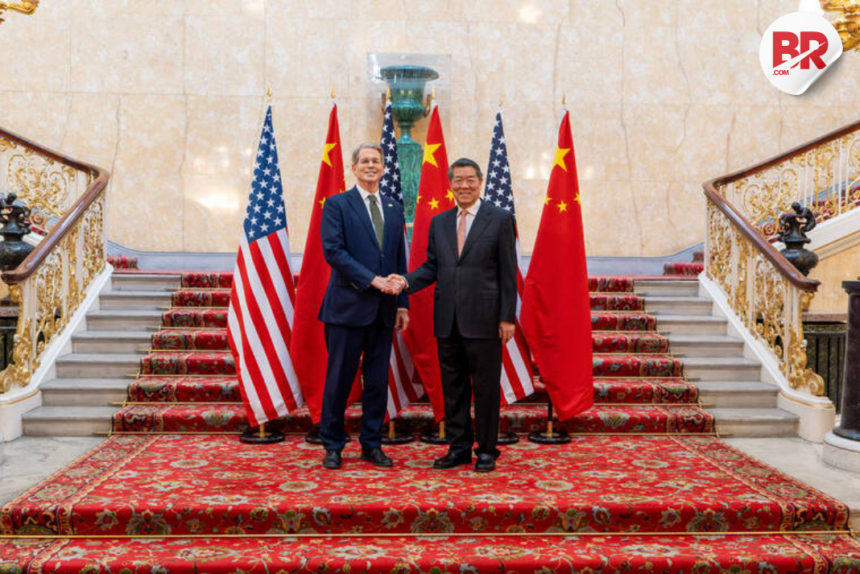
The US and China have agreed to a trade truce after two days of intense negotiations in London. US Commerce Secretary Howard Lutnick called it a “framework to implement the Geneva consensus,” referring to the earlier agreement made during May talks in Switzerland. The truce follows a direct phone call between Presidents Trump and Xi on June 5 and is now awaiting final approval from both heads of state.
But while the headlines talk peace, the ground reality is more complicated—and China seems to be walking away with more leverage than Washington expected.

At the heart of the US-China trade war are rare earth magnets, tiny components with giant consequences. They power electric vehicles (EVs), smartphones, military gear, and even household gadgets. China controls over 80% of the world’s supply.
Without access to these materials, US industries are slowing down. That means production delays, price hikes, and job uncertainty.
Rare Earths, Real Power
The trade truce doesn’t magically open the floodgates. China hasn’t banned rare earth exports outright—but it has made the process painfully slow and complex. Getting export licenses approved is a bureaucratic headache, and that’s exactly the point.
The US is now not demanding, but requesting that China loosen up. Specifically, they’re asking Beijing to suspend or remove restrictions on neodymium-iron-boron magnets—essential for EV motors, power steering, and braking systems.
Also Read China’s Rare Earths Are the Ultimate Trump Card Against US Tech Sanctions!
Who’s Really Winning?
Back in May, the Geneva deal saw both nations cutting tariffs—the US lowered duties to 30%, and China to 10%. Trump called it a “total reset.” But since then, Beijing has turned toward a smarter, subtler tactic: control the inputs instead of the prices.
The US came to London under pressure from inflation, supply chain chaos, and a looming election. China came with control—and confidence.
Global Ripples, Local Pain
The effects go far beyond Washington. In Japan, Suzuki Motors has paused production of its flagship Swift model due to rare earth shortages. In India, Maruti Suzuki says they’re not impacted—yet—but the industry is on alert.
Back in the US, automakers and electronics firms are scrambling. Without rare earth magnets, factories stall and layoffs loom. It’s a global supply chain hostage situation—and China’s holding the keys.
A Reset—or Just a Pause?
This trade truce buys time. But it’s China setting the tempo, and the US reacting. Lutnick says it’s up to the presidents now. Translation? It’s not done. And it may never be—if Beijing keeps tightening its grip.
The Irony
America launched this trade war with tariffs and bravado. Two summits and a phone call later, China’s not just surviving—it’s strategizing. Forget tweets. Beijing’s using supply chains as weapons—and winning without firing a shot.
Also Read Trade War Truce? Not So Fast – China Keeps Choking Key Mineral Exports












